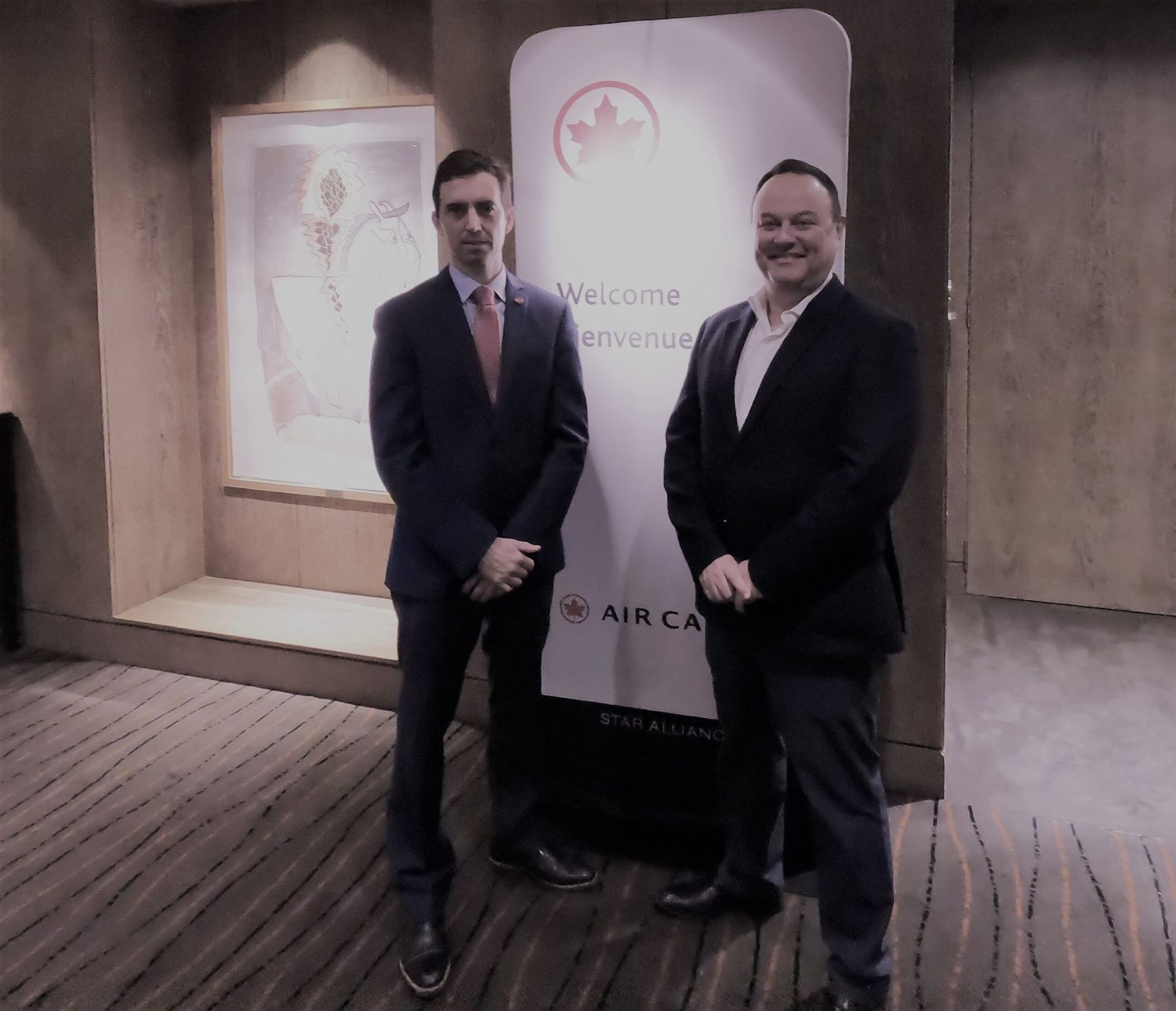As restrictions ease and travel shows first signs of a steady recovery, Air Canada aims to get back on track to become North America’s best airline. For that, a significant part of the Canadian flag carrier strategy is related to what is happening south of the border, in Latin America.
In a press conference held this morning Virgilio Russi, Air Canada’s Vice President of International Sales, and Ignacio Ferrer, Country Manager, shared some insights about how the market is reacting to a post-pandemic scenario and how demand is pushing for a significant capacity increase.
«Argentina is a special market both personally (Russi has served as Canadian Airlines International’s Country Manager based in Buenos Aires) and for the company. The operational results obtained since the return of our flights last December were excellent, and with the announcement of this change in our schedule that will allow for more seats on the route, and new connection options on our Toronto and Montreal hubs,» he said.
More flights, bigger aircraft
The company aims to change its schedule and aircraft for the boreal winter season, up gauging from four weekly flights operated in its Boeing 787-9 to a daily service in its Boeing 777-300ER.
This change will represent a staggering 146 percent increase in available seats, jumping from 1.192 weekly seats to 3.150. With these revised capacity and schedule, Air Canada’s Sao Paulo southern hub will allow a two-destination connection (Montreal 5 times a week with 787-9, and the continuation of the 777-300ER service to Toronto).
Before the pandemic, Air Canada operated its route to Buenos Aires via Santiago de Chile, but Russi stated that Sao Paulo is the best option for the current scenario. And, while demand and load factor are satisfactory, the company is not anticipating returning to the non-stop service that Ezeiza briefly had.
Returning to Perú
The carrier also announced that 2022 summer will mark the return of a long-awaited destination: Lima, Perú. Exact date and aircraft are yet to be defined, but Air Canada Rouge’s Boeing 767s won’t be coming back to Peruvian skies.
Bogotá still plays a key role in Air Canada strategy, as Avianca’s partnership allows an important set of regional connections for the leisure and business traveler. Chile will maintain its three weekly flights connecting Toronto and Santiago with its 787-9 and Brazil will gain two flights after Argentina’s reconfiguration.
The Airbus A321XLR, Air Canada’s real gamechanger
Russi explained that its A321XLR projected routes will allow the carrier to explore long and thin routes while maintaining them on the profitable side of the equation. A much-needed improvement in terms of economic sustainability after the fuel cost surge derived from the Russia-Ukraine conflict.

Nevertheless, the VP explained that Air Canada was financially fine before the pandemic and that allowed them to transit those challenging times with a tad of confidence. «We were sitting in a respectable number of reserves. The pandemic allowed us to explore cost cutting measures without impacting the operations -as there were none- and we came out of the crisis stronger than we entered it.»
Looking for a greener future (while keeping the greener budget)
The company is attacking the climate change initiatives head-on: Air Canada’s goal is to reach a 20 percent reduction of Green House Gases for aerial operations and 30 percent on ground operations by 2030. An ambitious goal, to put it mildly. However, Russi is confident on getting there on time.
«While SAF is difficult and expensive to get, is the way to go with today’s technology», he states, emphasizing that for an airline, hydrogen and electric are nice on paper but still miles down the road. But the VP thinks that the integral approach to greener aviation that the company is aggressively pushing will make the difference in the near future.


Comentarios
Para comentar, debés estar registrado
Por favor, iniciá sesión